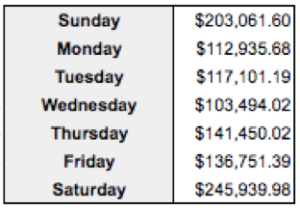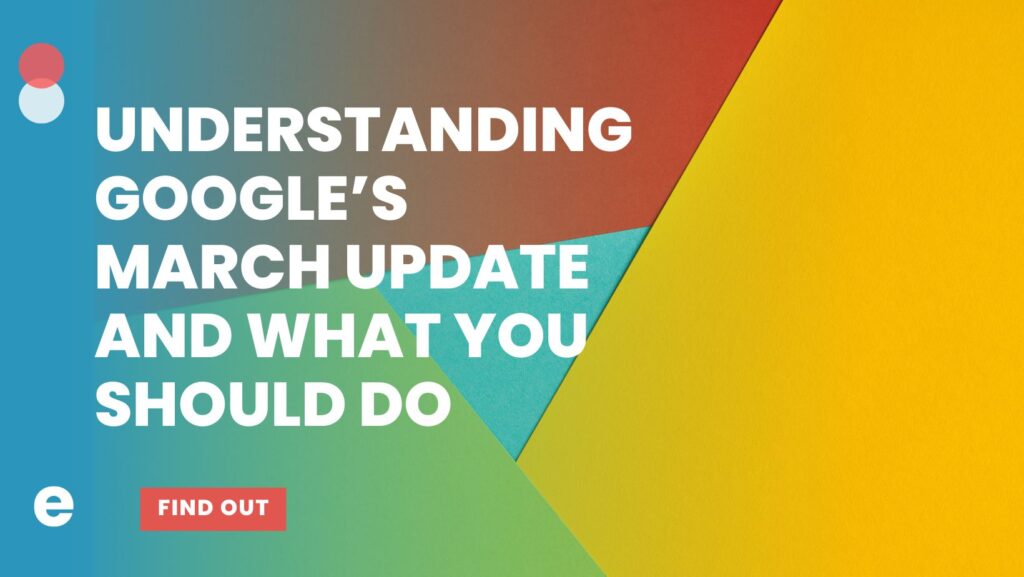Do you shop for sweaters in August? Plan your summer vacation in July? Do you search for the best ribeye near you at 5 am? Outliers excluded, most of us think about sweaters when the weather calls for it, plan our summer vacations months in advance, and few of us dive into a 72-ounce bone-in slab of dry-aged Angus for breakfast.
Everything we do is affected, to one degree or another, by a sense of seasonality. From the larger seasonal chunks of a given year down to the micro-moments throughout our individual days where goods & services become more relevant.
People who are searching for your goods & services are no different. If you haven’t taken a look at how the calendar affects what you’re promoting digitally, you should. One of the best places to start? Dayparting. Dayparting, a carryover term from the early days of broadcast television, is the process by which a given broadcast “day” was broken down into meaningful blocks of time, or, “parted”. This is where we get terms like “Primetime”, “Daytime”, and the “graveyard slot”. The key takeaway here is that each time slot has a specific audience, thus receiving specific programming that would engage those respective audiences, thereby increasing ad revenue.
Today, in the digital market space, analyzing your budgets is de rigueur, but looking at your budgets through the lenses of dayparting and seasonality is something that should be added to your regular reporting cycle if it isn’t a standard practice already.
Let’s look at the benefits of dayparting a bought media campaign with a client, a retailer who is influenced by seasonality, day, hour, and weather.
As was mentioned, this client is heavily influenced by seasonality and the weather – so we monitor their spending with those metrics in mind. A sort of “dayparting analysis” with some weather data thrown in. Here are the various components of our ad spend approach for this particular client:
Time of Day
We ran a dayparting analysis to see which hours or days are more expensive and which produce fewer results. We looked for higher CPCs and higher spending in general with no conversions. We ended up reducing our ads from 24/7 to 5am-9pm.
Days of The Week
Here is a screenshot of transactions totals by day:

As you can see, Mon, Tues, Wed have the lowest revenue. After looking in AdWords, we found that Mon-Wed had higher CPCs for search campaigns and Wed-Thurs had higher CPCs for Display campaigns. So, we reduced bids for campaigns on those days to try and mitigate CPCs.
Since the weekends have the highest website traffic (based on Google Analytics and observation), ad click-through traffic (based on AdWords), and coupon redemption (based on transaction data), we wanted to make sure we had enough budget to cover the weekends. We’d rather pull back spend during the week and open up the budget on the weekends. Below is a distribution model we employed to ensure that our client’s media budget was being maximized at the time best suited for their customers:

Given that we knew traffic was light earlier in the week, we weighted our spending towards the end of the week and through the weekend.
Holidays
Additionally, we increased spend the day before and day of major holidays such as Easter, Mother’s Day, and Memorial Day. We observed higher coupon redemption during these periods.
Weather
Whenever it was rainy or sweltering in a given location, we reduced the spend for that day. Conversely, when the weather was mild, we’d up the budget to take advantage of those favorable conditions.
We’d also pull back budget as a whole during the summer due to increasing temperatures. AdWords has recorded increasingly lower store visits related to Ad Clicks, and our client confirmed decreasing traffic overall, so the strategy aligns well with what is happening on a store level.
Interested in learning more about how to leverage every last penny of your marketing budget? Need to get a better handle on how your organization is affected by seasons, weather, days of the week, even hours of the day? Drop us a line – we’re listening.


